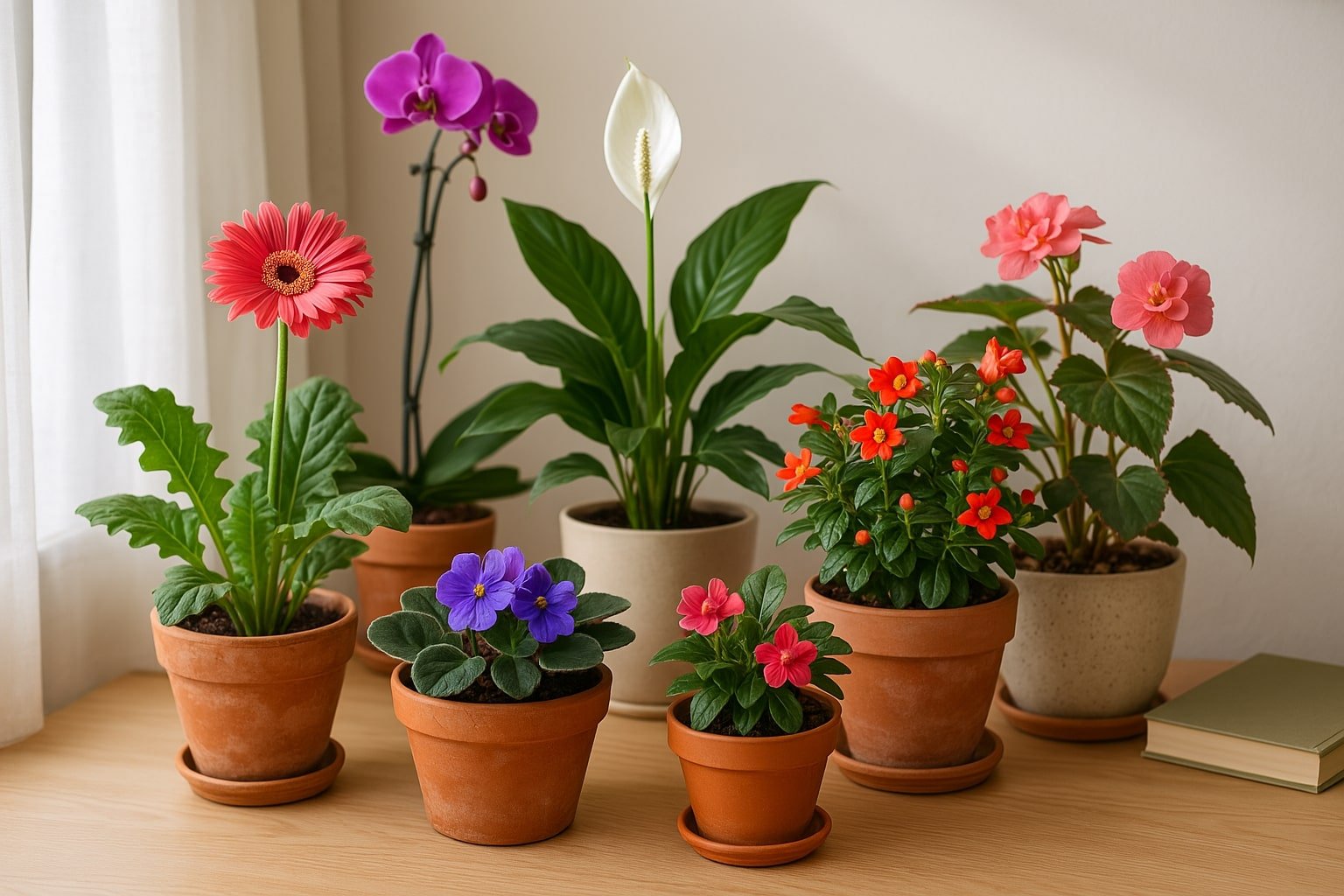Gardening doesn’t have to be confined to the backyard—indoor flower gardening is an exciting, space-smart way to bring nature inside. Whether you’re nestled in an urban apartment or just seeking floral therapy, this beginner-friendly guide will walk you through every step to create a lush, colorful indoor flower garden from scratch.
🌿 Why Choose an Indoor Flower Garden?
- Year-Round Blooms: Many indoor flowers thrive all year, keeping your space vibrant.
- Compact & Customizable: Ideal for small apartments or corner spaces.
- Air Purification: Some flowering plants improve air quality.
- Stress Relief: Gardening boosts mood and mental clarity.
🏠 Step-by-Step Guide to Start an Indoor Flower Garden
1. Choose the Right Location
Light exposure is key. Most flowering plants need bright, indirect sunlight to bloom. Consider placing them near:
- South- or west-facing windows
- Sunrooms or balconies
- Under LED grow lights if natural light is limited
💡 Tip: Use sheer curtains to diffuse harsh sunlight and prevent leaf burn.
2. Select Flower Varieties That Thrive Indoors
Opt for low-maintenance, adaptable varieties. Here’s a quick look:
| Flower Type | Light Requirement | Watering Needs | Highlights |
|---|---|---|---|
| African Violets | Medium–Bright | Keep moist | Compact, vivid blooms |
| Peace Lilies | Low–Medium | Weekly | Elegant & air-purifying |
| Orchids | Bright–Indirect | Monthly | Exotic and long-lasting |
| Gerbera Daisies | Bright | Twice a week | Cheerful and colorful |
| Begonias | Filtered light | Every 2–3 days | Fast-growing and versatile |
3. Prepare the Right Containers
Your choice of containers affects root health, bloom quality, and aesthetics.
✅ Best practices:
- Use pots with drainage holes to prevent root rot.
- Opt for ceramic or terracotta for moisture regulation.
- Choose containers that complement your home décor.
🪴 Pro Tip: Line the bottom with pebbles to improve drainage.
4. Choose the Right Soil Mix
Indoor flowers prefer light, well-aerated soil. Skip heavy garden soil—use specialized mixes such as:
- Potting soil for flowers: Contains perlite for drainage.
- Orchid mix: Ideal for epiphytic flowers with bark chips.
- DIY blend: 1 part peat moss + 1 part compost + 1 part perlite
5. Water Wisely
Watering needs vary, but a general rule is: water when the top inch of soil feels dry.
🚫 Avoid:
- Overwatering (causes root rot)
- Letting soil dry out completely
🕒 Create a watering schedule and observe leaf health for cues.
6. Provide Nutrients
Indoor flowers benefit from regular feeding:
- Use balanced liquid fertilizer every 2–4 weeks.
- Avoid over-fertilizing—can lead to salt buildup.
🌼 Bloom boosters with extra phosphorus can help trigger flowering.
7. Monitor Temperature and Humidity
Most flowering plants thrive in temperatures between 65°F–75°F (18°C–24°C). Ensure:
- Stable indoor climate
- Humidity around 40–60%
- Use humidifiers or pebble trays if air feels dry
8. Prune & Deadhead Regularly
Pruning promotes growth and prevents pests:
- Remove yellowed leaves
- Deadhead spent blooms to stimulate new flowers
- Trim leggy stems for bushier growth
✂️ Pruning shears > Scissors for clean cuts
9. Prevent Common Indoor Garden Problems
Watch for:
- Fungus gnats: Treat with neem oil or sticky traps
- Powdery mildew: Improve air circulation and reduce humidity
- Leaf spots or discoloration: Adjust watering or lighting
✅ Early intervention keeps your garden flourishing.
10. Decorate & Personalize
Infuse personality into your indoor garden:
- Use macramé hanging planters
- Add LED fairy lights for nighttime charm
- Include decorative stones, figurines, or plant markers
🌟 Indoor gardens aren’t just functional—they’re therapeutic and stylish.
🌼 Bonus: Seasonal Flower Ideas
Rotate your plants based on seasons for year-round beauty:
| Season | Recommended Flowers |
|---|---|
| Spring | Tulips, Hyacinths |
| Summer | Geraniums, Zinnias |
| Fall | Chrysanthemums, Marigolds |
| Winter | Cyclamen, Kalanchoe |
❓ FAQ: Indoor Flower Gardening
Q1: What are the easiest flowers to grow indoors for beginners? A1: African violets, peace lilies, and begonias are great starter options—they require minimal care and reward with beautiful blooms.
Q2: Can I grow flowers without sunlight? A2: Yes, with grow lights. LED grow lights mimic sunlight and help plants bloom indoors with minimal natural light.
Q3: How do I make my indoor flowers bloom faster? A3: Ensure proper light, feed with bloom-boosting fertilizer, and maintain ideal temperature/humidity levels.
Q4: How often should I repot indoor flowering plants? A4: Every 12–18 months or when you notice roots outgrowing the container. Spring is the best time to repot.





